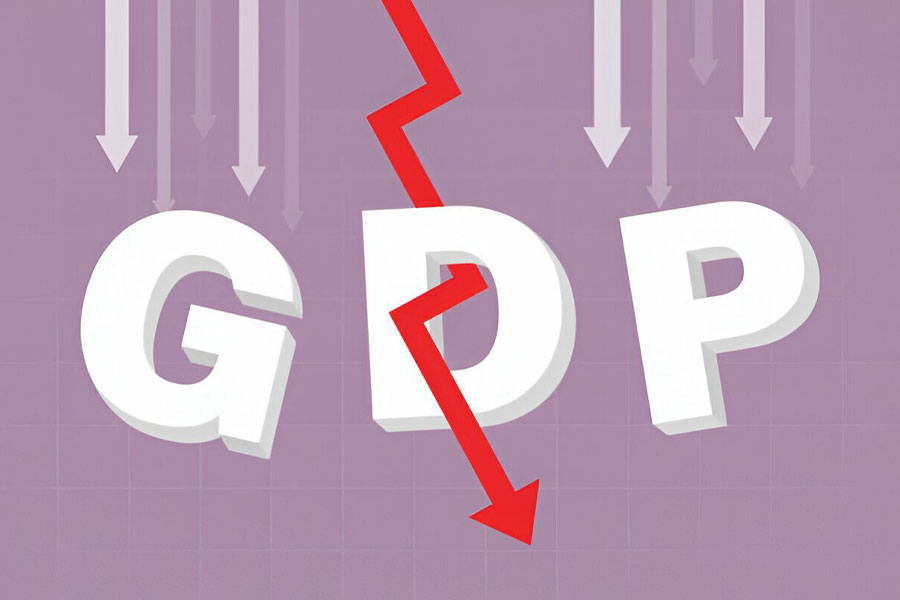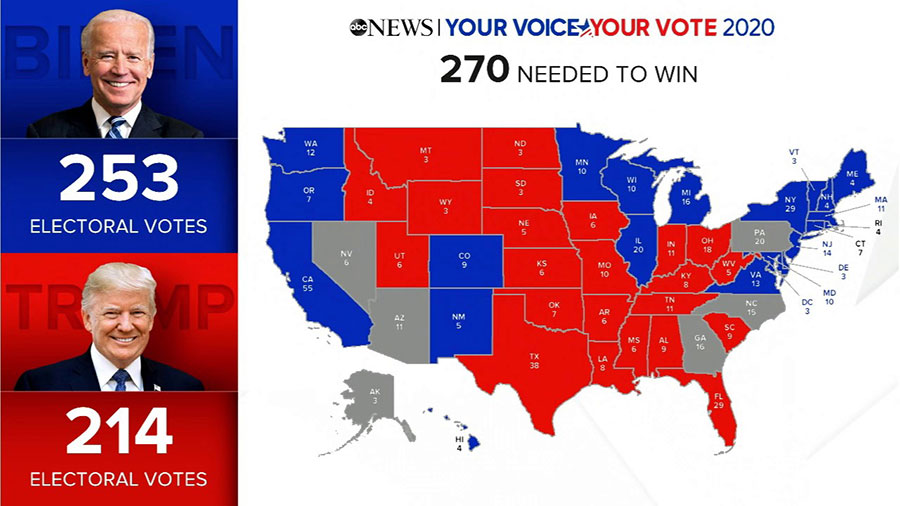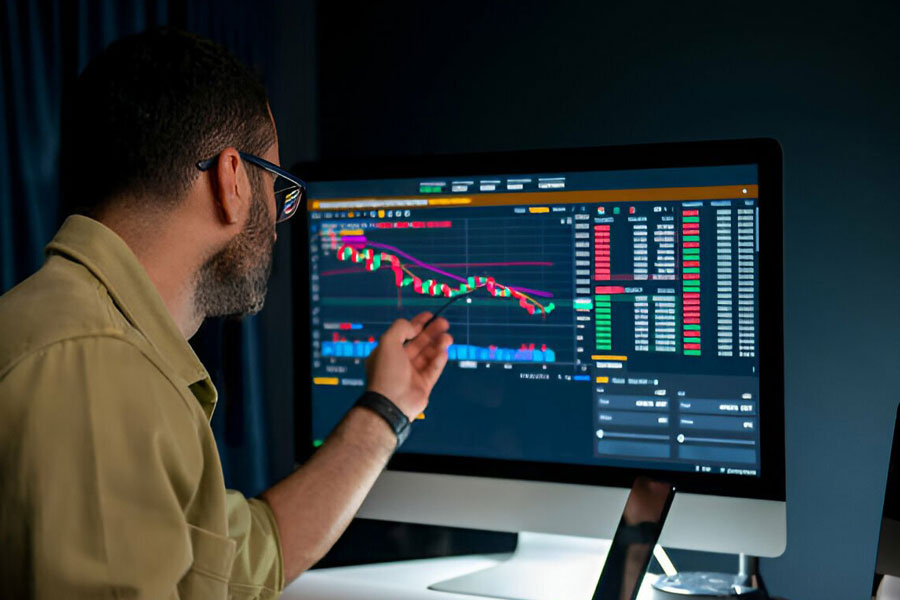Forex trading involves buying and selling currencies to profit from exchange rate fluctuations, making it one of the largest and most liquid financial markets globally with a daily trading volume exceeding $6 trillion. Choosing the right forex broker is essential for traders to access this market effectively. Unlike stock markets, forex operates 24/5, offering continuous trading opportunities.

Currencies are traded in pairs like EUR/USD or GBP/JPY, where the first currency is the base and the second is the quote. The exchange rate shows how much of the quote currency is needed to buy one unit of the base currency. For example, an exchange rate of 1.2000 for EUR/USD means one Euro buys 1.2000 US Dollars.
Currency pairs are influenced by economic indicators, geopolitical events, and market sentiment. Fundamental analysis assesses a currency’s value based on economic, financial, and geopolitical factors, rather than historical price charts. Traders analyze GDP growth, inflation, unemployment, and interest rates to gauge economic health. Political stability, global events, and credit ratings also impact currency values, guiding strategic trading decisions.
This guide explores key economic indicators for fundamental analysis, market influencers, and strategies for integrating fundamental analysis with other trading approaches for a comprehensive strategy.
Key Economic Indicators in Forex
Economic indicators are statistical data points that provide insights into the health and performance of an economy. These indicators are released periodically by government agencies, central banks, and other institutions, and they can have a significant impact on currency values. Here, we will discuss some of the major economic indicators used in fundamental analysis of forex, including Gross Domestic Product (GDP), inflation, unemployment rate, interest rates, and balance of trade.
Gross Domestic Product (GDP)
Gross Domestic Product (GDP) is a measure of a country’s economic output and is one of the most important indicators in fundamental analysis. It represents the total value of all goods and services produced within a country’s borders over a specific period, usually quarterly or annually. GDP is often used to gauge the overall health and growth of an economy.

Inflation
Inflation measures the rate at which the general price level of goods and services in an economy is increasing over time. It is usually expressed as an annual percentage and is monitored closely by central banks. Moderate inflation is considered normal in a growing economy, but high inflation can erode purchasing power and negatively impact economic stability.

Unemployment Rate
The unemployment rate measures the percentage of the labor force that is unemployed and actively seeking employment. It is a key indicator of economic health, as high unemployment can signal economic weakness, while low unemployment indicates a strong and growing economy.
Interest Rates
Interest rates set by central banks play a crucial role in determining a currency’s attractiveness to investors. Higher interest rates can attract foreign capital as investors seek higher returns, leading to an appreciation of the currency. Conversely, lower interest rates can reduce a currency’s appeal, resulting in depreciation.
Balance of Trade
The balance of trade measures the difference between a country’s exports and imports. A positive balance of trade (trade surplus) indicates that a country exports more than it imports, while a negative balance of trade (trade deficit) indicates the opposite. The balance of trade is an important indicator of a country’s economic health and competitiveness.
Read More: Predicting Forex Price Movement
Additional Factors in Fundamental Analysis
While key economic indicators provide valuable insights into a country’s economic health, several other factors can impact forex markets. These include political stability, global events, and credit ratings. Understanding these additional factors is crucial for a comprehensive fundamental analysis.
Political Stability
Political stability plays a significant role in determining a country’s economic performance and investor confidence. Political events, such as elections, policy changes, and government stability, can influence currency values.

Global Events
Major global events, such as natural disasters, pandemics, and geopolitical conflicts, can disrupt economies and influence currency values. These events can create uncertainty and lead to significant market volatility.

Credit Ratings
Credit ratings, assigned by rating agencies such as Standard & Poor’s, Moody’s, and Fitch, assess a country’s creditworthiness and its ability to repay debt. Credit ratings influence investor sentiment and can impact a country’s borrowing costs and currency value.
How to Use Fundamental Analysis in Forex Trading
Fundamental analysis provides forex traders with a robust framework for understanding the underlying economic, financial, and political factors that influence currency values. By delving into these factors, traders can make informed decisions about when to enter or exit trades, anticipate market trends, and understand the reasons behind currency movements. This section will explore how to effectively use fundamental analysis in forex trading, providing detailed insights and practical examples.
Identifying Potential Trends in Currency Valuations
The primary goal of fundamental analysis is to identify potential trends in currency valuations by analyzing economic data and indicators. Understanding these trends allows traders to predict the future direction of a currency’s value and make strategic trading decisions.
Making Informed Decisions About Entering or Exiting Forex Trades
Fundamental analysis equips traders with the knowledge needed to make strategic decisions about when to enter or exit forex trades. By staying informed about economic data releases, central bank policies, and geopolitical events, traders can position themselves advantageously.
Read More: Forex market holidays
Analyzing Central Bank Announcements
Central bank meetings and announcements are critical for forex traders, as they provide insights into future monetary policies, interest rate decisions, and economic outlooks.
Monitoring Economic Data Releases
Economic data releases, such as GDP reports, inflation figures, and employment data, can significantly impact currency values. Traders should monitor these releases and understand their potential implications.
Understanding the Underlying Reasons Behind Currency Movements
Fundamental analysis helps traders understand the underlying reasons behind currency movements, providing a clearer picture of market dynamics. This understanding can enhance a trader’s ability to make strategic decisions and respond to changing market conditions.
Analyzing Trade Balance Data
The trade balance provides insights into a country’s economic health and its currency value. A trade surplus generally strengthens a currency, while a trade deficit can weaken it.
Assessing Political Stability and Global Events
Political stability and global events can significantly impact currency values. Traders should monitor geopolitical developments, such as elections, policy changes, and international conflicts, to understand their potential effects on forex markets.
Practical Steps for Using Fundamental Analysis in Forex Trading
To effectively use fundamental analysis in forex trading, traders should follow practical steps to gather information, analyze data, and make informed decisions.
Step 1: Gather Reliable Economic Data
Traders should use reliable sources to gather economic data and information. Government agencies, central banks, and reputable financial news websites provide accurate and timely data.
Step 2: Analyze Economic Indicators
Traders should analyze key economic indicators to understand their potential impact on currency values. This analysis involves assessing GDP growth, inflation rates, unemployment rates, interest rates, and trade balances.
Step 3: Monitor Central Bank Policies and Announcements
Central bank policies and announcements play a crucial role in forex markets. Traders should stay informed about upcoming central bank meetings and policy decisions.
Step 4: Consider Geopolitical Events
Geopolitical events can create volatility and uncertainty in forex markets. Traders should monitor elections, policy changes, and international conflicts to understand their potential impact on currencies.
Step 5: Implement Risk Management Strategies
Effective risk management is essential for successful forex trading. Traders should use tools such as stop-loss orders, position sizing, and diversification to manage risk and protect their capital.
Limitations of Fundamental Analysis in Forex Trading
Fundamental analysis is a powerful tool in forex trading, offering insights into economic, financial, and political factors influencing currency values. However, it has several limitations that traders should consider for a balanced trading strategy:
- Difficulty in Predicting the Future: Predicting future market movements with certainty is challenging due to the forex market’s complexity and the rapid changes in influencing factors.
- Economic Data Revisions: Economic data, like GDP figures and employment numbers, often undergo revisions that can significantly alter currency values as new information becomes available.
- Unpredictable Economic and Political Events: Events such as natural disasters or sudden policy changes are difficult to forecast and can cause unexpected market volatility.
- Unpredictable Market Reactions: Even with accurate interpretation of economic data, market reactions can be unpredictable due to differing interpretations among traders and market participants.
- Divergent Market Interpretations: Institutional investors, hedge funds, and retail traders may have different interpretations of economic data, leading to conflicting market reactions.
- Impact of Market Sentiment and Speculation: Emotions like fear and greed can drive speculative behavior, influencing market movements in ways that fundamental analysis alone may not predict.
While fundamental analysis is valuable, it should be complemented with technical analysis. Technical analysis examines price patterns and market trends to enhance trading decisions, offering insights into entry and exit points, market momentum, and potential reversals.
By combining fundamental and technical analysis, traders can develop a more comprehensive trading strategy that leverages both economic insights and market dynamics revealed through technical indicators and chart patterns. This approach improves decision-making accuracy and helps mitigate the limitations inherent in each analysis method.
Tips on Trading with Fundamental Analysis
Fundamental analysis is a crucial approach for forex traders, offering insights into the economic, financial, and political factors that drive currency values. However, to effectively leverage fundamental analysis, traders need to adopt specific strategies and practices. This section provides practical tips on trading with fundamental analysis, focusing on trader behavior, risk management, and maximizing the benefits of economic data.
Understanding the Impact of High-Impact News
High-impact news, such as central bank announcements, economic data releases, and geopolitical events, can significantly influence currency values. Traders must understand how to navigate these events to capitalize on opportunities and manage risks.
Planning Around Economic Calendars
Economic calendars provide schedules of upcoming economic data releases and events. By planning trades around these events, traders can anticipate market volatility and position themselves advantageously.
Monitoring Central Bank Announcements
Central banks play a pivotal role in the forex market by setting interest rates and implementing monetary policies. Traders should closely monitor central bank announcements and statements to gauge the future direction of interest rates and economic policies.
Risk Management Strategies
Effective risk management is essential for successful trading. By implementing robust risk management strategies, traders can protect their capital and minimize losses during periods of high volatility.
Using Stop-Loss Orders
Stop-loss orders are a critical tool for managing risk. They allow traders to set predetermined exit points for their trades, limiting potential losses if the market moves against them.
Position Sizing
Position sizing involves determining the appropriate amount of capital to allocate to each trade based on the trader’s risk tolerance and the size of their account. By using proper position sizing, traders can avoid excessive risk and ensure their account can withstand multiple losses.
Diversification
Diversifying trades across multiple currencies and assets can help reduce risk. By spreading exposure, traders can mitigate the impact of adverse movements in any single currency pair.
Utilizing Economic Indicators Effectively
To make the most of fundamental analysis, traders need to understand and utilize key economic indicators effectively. By doing so, they can make informed decisions and anticipate market movements.
Analyzing Gross Domestic Product (GDP)
GDP measures a country’s economic output and is a primary indicator of economic health. Strong GDP growth typically signals a robust economy, potentially leading to currency appreciation.
Monitoring Inflation Rates
Inflation rates reflect the rate at which prices for goods and services rise. Central banks use interest rates to control inflation. Higher inflation often leads to higher interest rates, making a currency more attractive to investors.
Keeping an Eye on Employment Data
Employment data provides insights into economic health. Low unemployment typically indicates a strong economy and supports currency appreciation, while high unemployment suggests economic weakness.
Behavioral Considerations and Trader Psychology
Trader behavior and psychology play a crucial role in forex trading. Understanding common behavioral pitfalls and maintaining discipline can enhance trading performance.

Avoiding Emotional Trading
Emotional trading, driven by fear or greed, can lead to poor decision-making and significant losses. Traders should strive to remain objective and base their decisions on analysis rather than emotions.
Sticking to a Trading Plan
A well-defined trading plan outlines a trader’s strategy, including entry and exit points, risk management rules, and criteria for evaluating trades. Sticking to this plan helps traders maintain consistency and avoid impulsive decisions.
Staying Informed and Continuously Learning
The forex market is dynamic and constantly evolving. Traders need to stay informed about global economic developments and continuously improve their knowledge and skills.
Following Reputable News Sources
Reliable news sources provide timely and accurate information about economic data releases, central bank policies, and geopolitical events. Traders should follow these sources to stay updated on market developments.

Participating in Forex Forums and Communities
Forex forums and communities offer valuable insights, tips, and discussions about trading strategies and market conditions. Engaging with other traders can enhance knowledge and provide new perspectives.
Conclusion
Recap of the Importance of Fundamental Analysis
Fundamental analysis is a powerful tool for understanding the intrinsic value of currencies and making informed trading decisions. By analyzing key economic indicators, such as GDP, inflation, unemployment, interest rates, and balance of trade, traders can gain valuable insights into the factors driving currency values. Additionally, considering other factors like political stability, global events, and credit ratings enhances the comprehensiveness of fundamental analysis.
Emphasizing the Need for a Comprehensive Approach
While fundamental analysis provides valuable insights, it is important to recognize its limitations and consider incorporating other analysis methods, such as technical analysis, for a well-rounded approach. Combining both fundamental and technical analysis can help traders make more informed and strategic decisions, increasing their chances of success in the forex market.
Encouraging Traders to Develop Economic Knowledge
To effectively use fundamental analysis, traders should continuously develop their economic knowledge and stay updated on global events. By staying informed and practicing effective risk management strategies, traders can navigate the complexities of the forex market and capitalize on market opportunities.
References: +
What is the difference between fundamental analysis and technical analysis?
Fundamental analysis focuses on evaluating a currency’s intrinsic value based on economic, financial, and geopolitical factors, while technical analysis involves studying historical price charts and patterns to identify potential trading opportunities. Fundamental analysis provides insights into the underlying reasons behind currency movements, while technical analysis helps traders identify entry and exit points based on price trends and patterns.
Can fundamental analysis be used for all currency pairs?
Yes, fundamental analysis can be applied to all currency pairs. However, the availability and reliability of economic data may vary for different currencies. Major currency pairs, such as EUR/USD and GBP/USD, often have more comprehensive and timely economic data, making fundamental analysis more effective. Traders should consider the availability of data when applying fundamental analysis to different currency pairs.
How often should traders review economic data and news?
Traders should review economic data and news regularly to stay informed about the factors influencing currency values. The frequency of review may depend on the trader’s trading strategy and time horizon. Short-term traders may need to monitor data and news on a daily basis, while long-term traders may review economic indicators and events less frequently but with a focus on longer-term trends.
What are some reliable sources for economic data and news?
Reliable sources for economic data and news include government agencies, central banks, financial news websites, and economic calendars. Some popular sources include the U.S. Bureau of Economic Analysis (BEA), the European Central Bank (ECB), Reuters, Bloomberg, and ForexFactory. Traders should use multiple sources to ensure the accuracy and comprehensiveness of the information.







